Reviews
Robert Zemeckis
USA, 1990
Credits
Review by Rumsey Taylor
Posted on 26 August 2010
Source Universal DVD
Related articles
Reviews
Back to the Future
Reviews
Back to the Future Part II
Categories Favorites: Time Travel
Part III: The Metaphysics
There’s something very familiar about all this…
In Back to the Future Part II’s opening act, when Marty, Doc, Jennifer, and Doc’s dog Einstein have entered the year 2015, roughly ten minutes elapse before Marty is again in some sort of scuffle. And again, it’s with Biff, or rather, his grandson Griff, who so takes after his grandfather that it’s not explicitly clear if Marty is even in the future. Nonetheless, Griff, dutifully fulfilling the Tannens’ century-long cultivation of menace, is once again poised to make a coward of a McFly.
Marty, we know, is no coward, and he stands up to Griff in a manner that’s come to be expected. His defense only nourishes Griff’s antagonism, and in short order Marty - dispensing with another of Doc’s imprecise and unrehearsed plans to modify but not totally compromise the space-time continuum - is sprinting away from Griff, in want of a child with a skateboard ripe for the plucking.
The future has no skateboards, but Marty keenly enables his only predetermined escape with a hoverboard, its Mattel logo clearly situated on its top surface. There’s no manure truck for Griff to land in, but the chase more or less culminates like the others in the Back to the Future trilogy. When Biff says, in anticipation of his grandson’s inevitable humiliation, “There’s something very familiar about all this,” it’s because he’s watching the same movie we are—a sequel, specifically.
Biff’s observation demonstrates Back to the Future’s self-awareness, for one, but this shouldn’t be mistaken for cleverness. The trilogy is so abundantly self-aware that it becomes redundant. In Part III, when Buford “Mad Dog” Tannen (Biff’s great-grandfather) is bested by Marty and collapses into a wagon of manure, he recomposes in closeup, remitting, “Ah haight ma-newer.” His delivery of this statement distills experience, as if this has happened to him a few times before.
The audience is thrilled by this, a Best Of compilation played three times in a row. The trilogy is appreciated, I think, for how generously and abundantly it satisfies their expectations, nourishing them with scenarios that not only recall the first film, but repeat portions of it verbatim: Doc continues his excited, expository manner of scientific revelation (he also continues to preface each film’s climax with a toy model or chalkboard schematic in his workshop); Marty acts upon his aversion to being called “chicken”; Principal Strickland, who looks identical between 1955 and 1985, is always bald and on the lookout for order (in III he’s the town marshal, and he apparently has hair); Biff, Griff, and Buford Tannen’s maniacal menace; and Hill Valley itself, transfixed by that lightning-prone courthouse clock, the most overused example. Part I climaxes in the legendary lightning strike that sends Marty back to 1985, and then Part II repeats this very scene with much of the same footage. Part III, in its preface, does the same.
The clocktower sequence is so iconic in its depiction of urgency that to restage it - as Griff does Biff, Copernicus does Einstein, or “Yella” does “Chicken” - would be a mockery—this is precisely what happens at the end of Part III. Throughout the film, in 1885 Hill Valley, the clocktower is visible in the periphery as it’s being erected. The DeLorean is again damaged (the fuel tank has been punctured by a parade of arrows), so Doc conceives of a plan to get it up to 88 miles per hour, propelling he and Marty to the future for the last time: placing the time machine in front of a train. Only the train must be oriented on a straightaway that will facilitate re-entry into the future, and the only place near Hill Valley with a sufficient straightaway is Clayton Ravine, over which a bridge has yet to be built. After Marty and Doc (who has a love interest this time around: Clara, after whom the ravine would be posthumously named if Doc hadn’t saved her) fulfill their other time maintenance chores, they steal a steam engine and point it, just behind the newly track-enabled DeLorean, straight toward the unfinished bridge over Clayton Ravine, in which you’re assured that train is going to spectacularly crash.
The context is different, but the fundamental elements from the climax of Part I are recalled, namely speed and malfunction. Even without the lightning bolt or the clocktower it all feels familiar—in reiteration the suspense - and only the suspense - is emphasized, suspense being the entire trilogy’s oxymoronic stock and trade. Consider for a moment that the Back to the Future movies are about time travel, a concept that in its most understated utility is capable of absolving the very possibility of urgency. Nonetheless, Marty is always in a hurry and he’s always on the brink of failure, as illustrated in the photo he uses, at the climactic school dance later in Part I, to gauge his success as maintaining the past—ensuring that his parents meet and fall in love. The purpose of this photograph is to animate suspense (the image of Marty’s brother and sister fade-in or -out in accordance with what’s happening at that point, i.e. one of Biff’s cronies cutting in on Marty’s future parents), and in doing so it transcends the space-time continuum. This is a simplification of otherwise complex concepts; in this case, the photograph lets us know precisely how close Marty comes to inextricably voiding his existence.
But even after the people in the photograph are satisfactorily opaque, the suspense continues: Marty, having apparently indefatigably linked his parents back up, is all set to meet Doc, get the DeLorean, engage it at the right time in accordance with a foreknown lighting bolt (supplying the gigawattage necessary in powering the flux capacitor) and return to his present. Instead, the motor stalls, Doc’s wire hookup becomes unplugged, Doc falls off the lip of the clocktower, Dock frantically plugs the wires back together and in doing so unplugs them back at the point where they connect with the power line below, the DeLorean finally starts, the thunder increases, and Marty fiercely depresses the gas pedal before Doc has mended his makeshift transmitter.
Marty’s travails ever antagonized, these films are adept a maximizing suspense down to the last minute. This is what’s great about them, their subscription to cinematic drama in spite of their endeavoring - or rather, Doc’s many exclamations of science - to establish and sustain their own metaphysics. In the characters’ own words, after all is said and done and everyone is at their correct point in chronology:
MARTY:
What about all that talk? About screwing up future events? The space time continuum?DOC:
Well, I figured: What the hell?
More Favorites: Time Travel
-

Bill and Ted’s Excellent Adventure
1989 -
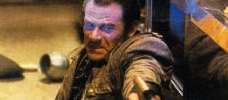
Trancers
1985 -
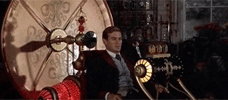
The Time Machine
1960 -
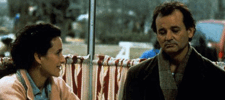
Groundhog Day
1993 -
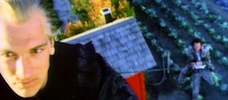
Warlock
1989 -

The Navigator
1988 -
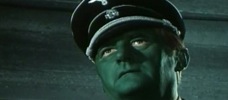
Tomorrow I’ll Wake Up and Scald Myself with Tea
1977 -
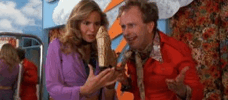
The Spirit of ‘76
1990 -
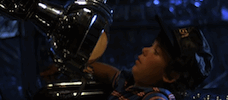
Flight of the Navigator
1986 -
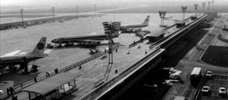
La jetée
1962 -
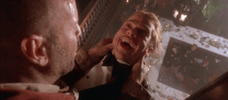
Twelve Monkeys
1995 -

Beastmaster 2: Through the Portal of Time
1991 -
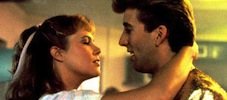
Peggy Sue Got Married
1986 -
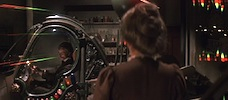
Time After Time
1979 -
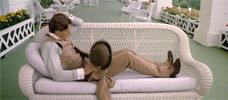
Somewhere in Time
1980 -
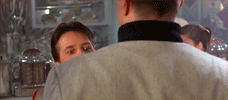
Back to the Future
1985 -
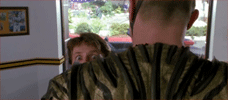
Back to the Future Part II
1989 -
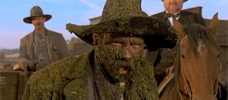
Back to the Future Part III
1990 -
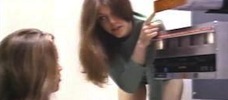
Idaho Transfer
1973 -
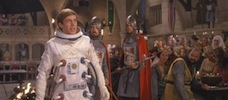
Unidentified Flying Oddball
1979 -
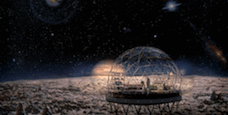
Slaughterhouse-Five
1972 -

The Lake House
2006 -
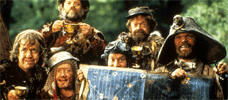
Time Bandits
1981 -
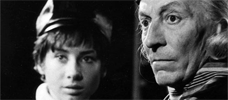
Doctor Who
1963–present -
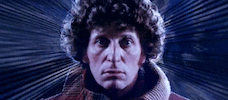
Doctor Who
1963–present
We don’t do comments anymore, but you may contact us here or find us on Twitter or Facebook.



